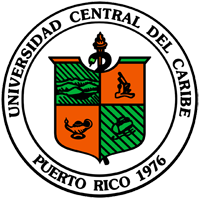787-798-3001
info@uccaribe.edu
Magnetic Resonance images have revolutionized the medical diagnostic imaging field with the superb resolution of tissues of its images. Magnetic Resonance utilizes a strong magnetic field (several times stronger than gravity force) to aling free protons (hydrogen ions), then this protons are stimulated with an radiofrecuency and pushed out of alignment. When the protons return to the magnetized state, they resonate (they resend the energy used to dealigned them), during which process they emit a signal, which is captured by a radio antenna and passed to a computer. The computer then processes the information and produces an image based on the density and volume of the tissue being imaged. Images produced with Magnetic Resonance differ from Computerized Tomography in that there are various ways to analyze tissue density based on their magnetic properties.
The academic-practical program of the Post-Associate Certificate in Magnetic Resonance is designed to develop in graduates from a Radiologic Technology program, the theoretical knowledge and practical skills need to produce optimum quality images to be used in medical diagnosis through the use of highly sophisticate equipment using magnetic and radiofrecuency energy. This certificate comprises 13 academic credits, which are offered in a one semester long (15 weeks) period.
DESCRIPTION OF THE MAGNETIC RESONANCE TECHNOLOGIST
The Imaging Technologist specialized in Magnetic Resonance, is the health professional which operates very complex and sophisticate equipment which combines magnetic and electronic elements with ionizing radiation producing equipment to produce images of the human body with the purpose of making or defining a medical diagnosis.
Because of the impression the equipment produces on patients, a Magnetic Resonance technologist first task, before doing the procedure, it’s to interact with the patient in a effective way to orient him on the procedure to be performed and lower the patient anxieties. Before the procedure, the technologist explains to the patient the importance of following the instructions he will receive during the procedure; of maintaining the proper positioning and the proper way of breathing so as to acquire optimum quality images.
CERTIFICATE IN MAGNETIC RESONANCE GRADUATE PROFILE
A graduate from the Post-Associate Certificate in Magnetic Resonance of the Radiologic Technology Program of the Universidad Central del Caribe, will be able to:
-
Evaluate patient’s medical and clinical information to determine the procedure to perform, following the protocols established by his/her workplace and according to the medical and physical condition of the patient.
-
Perform Magnetic Resonance procedures acquiring the anatomic information, and integrating patient medical information and clinical to facilitate the patient diagnosis.
-
Assume full responsibility for his/her patient’s and accompanying person’s safety during the procedure, indicating the precautions to be taken around a strong magnetic field.
-
Interview patient to asses the possible risk of metal magnetization.
-
Accurately manipulate the Magnetic Resonance equipment to produce optimum quality images.
-
Demonstrate his/her knowledge about the operation and physical principles related to the Magnetic Resonance equipment.
-
Perform any Magnetic Resonance procedure that it’s required from him/her, regardless of the level of physical and/or mental condition of the patient and without any evidence of social, racial and cultural prejudice.
-
Educate patient and clarify any doubt the patient might have regarding the equipment; the need to use contrast media when indicated, and the importance of performing an optimum quality procedure to enhance diagnosis.
-
Offer optimum quality services in a timely and reasonable time and manner.
-
Document any incident that might occur before, during and after the procedure, in the patient’s record and/or any form designed for this purpose.
-
Evaluate the quality of the services, keeping control on the quality of the operations and functioning of the equipments and its accessories; image printing and post-processing routines and image viewing conditions, among others.
-
Acquire optimum quality images in all procedures performed.
-
Apply discretion and critical thinking to the performance of all procedures and the operation of the equipment.
-
Collaborated with the Radiologist in the performance of interventional procedures using Magnetic Resonance.
-
Assume responsibilities for his/her own personal and professional development and enhancement through his/her participation in continued education activities and in new procedures capacitating workshops.
